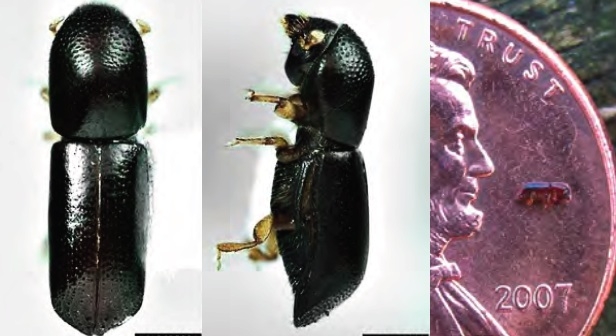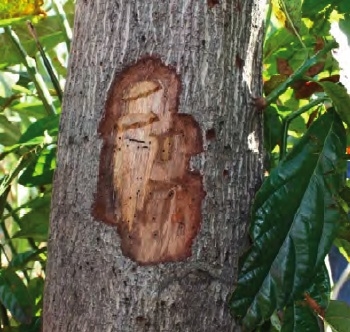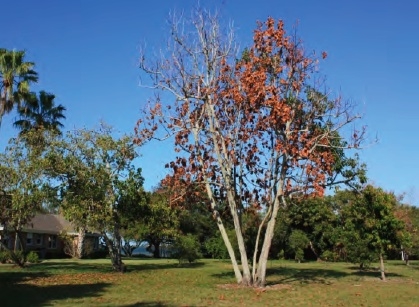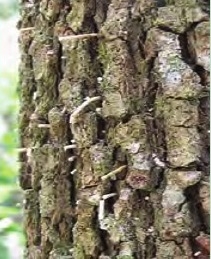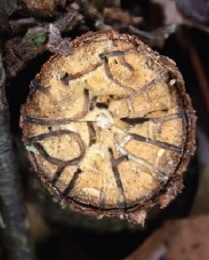Laurel Wilt Disease Basics for Avocado Growers
Raffaela lauricola, the causal agent of laurel wilt disease (LWD) is a devastating pathogen that has the potential to greatly impact the California avocado industry. Laurel wilt is a vascular wilt disease that has led to substantial mortality on trees in the Lauraceae family since it was first found in the southeastern United States in 2004. Learn more about laurel wilt from University of Florida researchers.
How laurel wilt is transferred
- R. lauricola is transferred by a non-native redbay ambrosia beetle.
- Adult beetles are very small (~1/16 inch long), dark brown to black in color, slender and cylindrical in shape and spend most of their life within the tree.
- Larvae are white, legless grubs with an amber colored head capsule and are found within galleries throughout infected trees.
- The female beetles bore the wood of healthy avocado trees to lay their eggs and while doing so inoculate the galleries with fungal spores carried in her mouth.
- The fungus colonizes the wall of the gallery and after hatching, the larvae feed on the fungus. R. lauricola then moves through the water and nutrient transport tissues of the tree, eventually plugging the flow of the water and causing the tree to wilt.
How laurel wilt disease spreads
- Redbay ambrosia beetles also infect and kill California bay laurel — thus these trees could assist in the spread of laurel wilt disease.
- Redbay ambrosia beetles can fly short distances, but laurel wilt disease spreads more quickly through the movement of infested plant material such as firewood.
Symptoms of laurel wilt disease
- Trees with laurel wilt show various stages of crown decline, including branch dieback and occasionally defoliation with reddish and purple discoloration.
- Wilted leaves may remain on the trees for up to a year.
- Removal of the bark from wilted branch section exposes black to brown streaks of discoloration extended into the adjacent wood.
- Affected trees also may show sawdust protruding from the stem, produced by the beetle as they bore into the wood.



